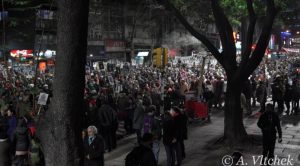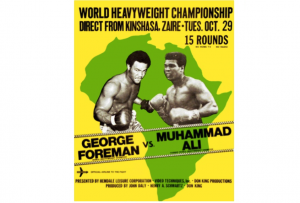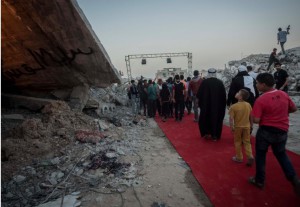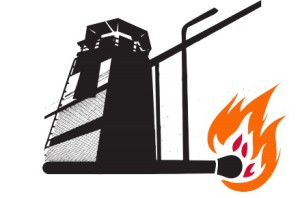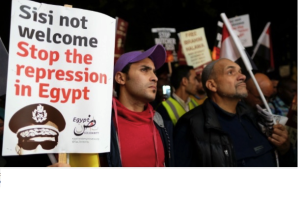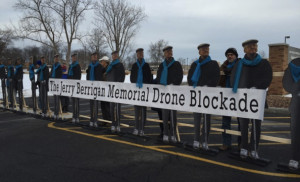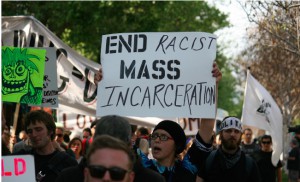….. HUMAN RIGHTS …..
An article by John Ahni Schertow, IC Magazine, a publication of the Center for World Indigenous Studies
Good news. Sometimes, it comes in the form of a cancelled hydro dam that spares 20,000 people from the burden of displacement. Other times, it takes the shape of a simple court admission that Indigenous Peoples do actually make the best conservationists.
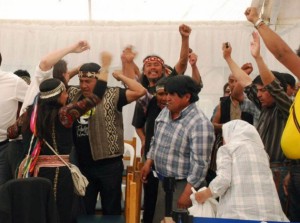
Mapuche “Not Guilty” (Photo: Ruben Curricoy Nañko)
In this day in age such stories are incredibly rare. They are even more difficult to find amidst the constant deluge of media that doesn’t matter. That makes them all the more valuable.
Indigenous rights victories give us all pause to celebrate, to reflect and to rejuvenate our own quests for justice.
May we encounter 10,000 more victories just like these in 2016!
1. JUSTICE FOR THE OGON
In a landmark decision last week, the Dutch Court of Appeals ruled that four Ogoni farmers from Nigeria can take their case against Shell to a judge in the Netherlands. Alali Efanga, one of the Ogoni farmers who, along with Friends of the Earth Netherlands, brought the case against Shell, said the ruling “offers hope that Shell will finally begin to restore the soil around my village so that I will once again be able to take up farming and fishing on my own land.”
The ruling by the Court of Appeals overturns a 2013 decision in favor of Shell, who, in another big hit to the multinational oil giant, agreed to clean up two massive oil spills in the Ogoni community of Bodo following a three-year legal battle in London.
2. WAMPIS AUTONOMY
The Wampis nation, who made international headlines in 2009 when they stood up to the government of Peru alongside their brethren the Awajun, took an unprecedented step foward by establishing the first Autonomous Indigenous Government in Peru’s history. Spanning a 1.3 million hectare territory – a region the size of the State of Connecticut – the newly created democratically-elected government brings together 100 Wampis communities representing some 10,613 people.
Speaking of the challenges that the Wampis Nation will now face, the newly elected Pamuk (first President) Wrays Pérez Ramirez, told Intercontinental Cry by phone: “We know that it will be difficult to get the National Government to support us and recognize our territory. It will seem unacceptable to the Government to have to consult us regarding any activity that could affect our territory. We know that it is going to be hard work but we are prepared. We are not going to stay silent not least when we have legal backing from national and international legislation regarding our right to self-determination and free, prior and informed consent. It will be difficult, but not impossible.”
3. PROTECTED LANDS
After five years of legal contests and what felt like a lifetime of uncertainty, Colombia’s Constitutional Court confirmed that Yaigojé Apaporis, an indigenous resguardo (a legally recognized, collectively owned territory), has legitimate status as a national park.
Comprising a million hectares of the Northwestern Colombian Amazon, the pristine forest region of Yaigojé Apaporis is home to numerous endangered species including the giant anteater, jaguar, manatee and pink river dolphin. It is also home to the Makuna, Tanimuka, Letuama, Barasano, Cabiyari, Yahuna and Yujup-Maku Indigenous Peoples, who share a common cosmological system and rich shamanistic traditions. Together these populations act as Yaigojé’s guardians, a role that was strengthened in 1988 when they successfully established the Yaigojé Apaporis resguardo over their traditional territory.
In the late 2000s Canadian mining multinational Cosigo Resources started trying to exploit a legal loophole in Colombia that would let them mine for gold inside the resguardo. The Constitutional Court’s decision brought a welcomed end to that dishonest effort.
4. INDIGENOUS PASSPORTS
On October 12, 2015, the day of Indigenous Resistance, Kichwa lawyer Carlos Pérez Guartambel entered Ecuador with a Kichwa passport, sending out a clear reminder to the international community that indigenous nations are not simply “bands” or informal groups whose rights stem from the good graces of UN member states, but actual nations.
Ecuador’s immigration authorities did not know what to do. After 30 minutes of hesitation, they decided to accept the Kichwa passport as a form of ID, stamped Guartambel’s immigration card (not the passport) and allowed him to enter Ecuador. Within a few hours, however, Ecuadoran state officials reversed themselves and denied the validity of the Kichwa passport. This can be seen in a video released by the Department of Immigration in the Ministry of the Interior. Minister Serrano ridiculed the Kichwa passport as a “fantasy” on Twitter, posting a montage of the Kichwa passport with the portrait of a cartoon character.
Later that afternoon, the Council of Government of ECUARUNARI, an organization founded in 1972 by 18 Indigenous Peoples and representing 14 different nationalities, met in Quito to distribute over 300 passports, including one to Salvador Quishpe, the Governor of the Amazon Province of Morona-Chinchipe. During the passport ceremony, the Kichwa leadership insisted that Indigenous passports were as valid as ancestral medicine, inter-cultural education, and Indigenous justice–all recognized in Ecuador.
5. “NOT GUILTY”
After more than three years of preparation, an Argentinian court vindicated three Mapuche land rights defenders in a first-of-its kind inter-cultural trial.
The case began in the Mapuche community of Winkel Newen on December 28, 2012, when Officer of the Court Veronia Pelayes, representatives of the Apache Oil Company and a contingent of police arrived with an eviction notification. The community defended itself by throwing stones, one of which hit and injured Pelayes and damaged a vehicle. It was this incident that lead to an accusation of “attempted homicide” against Relmu Ñamku and charges of “serious damages” for Mauricio Rain and Martin Velasquez Maliqueo. In the case of Ñamku, the public prosecutor called for a 15-year prison sentence — disproportionate given that eight years is the norm for manslaughter cases.
“The public prosecutor and oil companies in Zapala had a clear political intention with this trial, for it to be an ‘ejemplary punishment’ to intimidate and discipline other indigenous communities who defend their rights against the advance of oil exploitation in their territories,” said writer Maristella Svampa and law professor Roberto Gargarella.
Their attempt failed and instead this historic trial marks an important step in curbing attempts to criminalize indigenous leaders defending their territory.
6. WHAT’S IN A NAME?
The highest mountain in the United States recovered its original indigenous name, Mount Denali, for all official purposes, after a decades-long dispute. The name “Denali” has its origin in the language of the Koyukon people, who inhabit the area north of the summit. In the Koyukon language, “Denali” means “the tall one.” The 6,168-metre high mountain was officially known until now at federal level as Mount McKinley, in honor of an American president assassinated in 1901.
It is hoped that the U.S. government will restore the indigenous names of other monuments, parks and places including Devil’s Tower, the Yosemite National Park, the Grand Canyon, Mount St. Helens, and Mount Rainier to name a few.
7. BIOCULTURAL RIGHTS
Indigenous custodians from Benin, Uganda, Kenya and Ethiopia issued a challenge for the African Commission on Human and Peoples’ Rights to protect sacred sites, governance systems and custodians in a ‘decisive policy and legislative response’ to the new scramble for Africa and its impact on Indigenous territories.
(Article continued in right column)
Question for this article
Indigenous peoples, Are they the true guardians of nature?
(Article continued from left column)
In their statement, the custodians describe the centrality of sacred sites to their existence, writing that “Sacred natural sites are where we come from, the heart of life. They are our roots and our inspiration. We cannot live without our sacred natural sites, and we are responsible for protecting them.”
“We are deeply concerned about our Earth because she is suffering from increasing destruction despite all the discussions, international meetings, facts and figures and warning signs from Earth… the future of our children and the children of all the species of Earth are threatened. When this last generation of elders dies, we will lose the memory of how to live respectfully on the planet, if we do not learn from them now,” say the custodians.
8. TWO CENTURIES IN THE MAKING
Nearly 300 Poqomchi’ Maya families that make up the Primavera communities in the Guatemalan department of Alta Verapaz won a significant victory after negotiating a settlement with the Guatemalan Minister of the Interior, the Secretary of Agrarian Affairs, and representatives from Maderas Filips Dias/Eco-Tierra, a logging business that was seeking to harvest the land’s forests.
“This is a major victory, especially under these conditions of corruption,” said Rony Morales from the Union of Veracruz Campesino Organizations (UVOC), which worked closely with the communities to obtain this victory. “The fact [that] a community can finally win their land at no cost to the community is very important. For the other indigenous communities in San Cristobal Verapaz and the valley [of] Polochic that are in this same process, they have found hope in this victory.”
The Maya families struggled for over two centuries for the rights to their land, which was privately held for years as the Finca Primavera. They faced intimidation, nearly 25 assassinations, and over 50 arrest orders in response to their claims on the land.
9. BYE BYE HERAKLES
Herakles Farms, a New York based investment firm and the parent company of SG Sustainable Oils Cameroon (SGSOC) formally abandoned its plan to establish oil palm plantations astride the Iconic Korup National Park and Rumpi Hills Forest Reserve in Cameroon.
Supported by an “eco-friendly” non-profit owned by Bruce Wrobel, former Managing Director of Sithe Global and Founder of Herakles Capital Corporation, the oil palm project would have brought disastrous pollution resulting from pesticides, fertilizers and herbicides and sewage disposal; adversely affecting the health of animals in the Korup Park that depend on the water.
The project would have also degraded the livelihoods of the Baka, Bakola, Bedzang and Bagyeli –so-called ‘Pygmy’ peoples–who are are heavily dependent on the region for subsistence.
10. THE LAND IS OURS
After 18 years of continuous struggle, the Enxet Sur Indigenous community of Yexwase Yet finally received legal title to 10,030 hectares of their ancestral land in the Chaco region of Paraguay.
The hard-fought victory was tested just a few weeks after the President of Paraguay handed the title over to the community. A retired Paraguayan football star and his family attempted to move on to part of the 10,030 hectares claiming he had recently purchased it to build a cattle ranch estate.
“We called the police and the State prosecutor immediately and they told the footballer to leave, that he had no right to be there,“ Gabriel Fernandez, one of the leaders of Yexwase Yet, told Intercontinental Cry. “For once it was someone else being evicted. Now the land is really ours.”
11. NUCLEAR WASTE FREE
After a four-year, hard-fought campaign to keep the province of Saskatchewan free of nuclear waste, last Spring, the Nuclear Waste Management Organization (NWMO) announced that Creighton was no longer a contender in the organization’s siting process. It was the last of three Saskatchewan communities in the running to host a deep geological repository for the long term storage of spent fuel bundles from Canada’s nuclear reactors in Ontario, Québec and New Brunswick.
“This announcement is the culmination of four years of research, sacrifice, networking and hard work by a group of dedicated people with one goal: to keep nuclear waste out of Saskatchewan,” said Candyce Paul, a founding member of the Committee for Future Generations.
“The powerful Nuclear Waste Management Organization with all their money and all their experts could not beat back the duty we have to protect our future generations,” said Paul.
12. MAUNA KEA
The Hawaii state Supreme Court invalidated the permit allowing construction of the hugely controversial Thirty Meter Telescope atop the sacred mountain known as Mauna Kea.
The court said the state Board of Land and Natural Resources erred when it issued the permit before a contested case hearing was held for the $1.4 billion project.
The struggle to defend Mauna Kea, however, doesn’t end there. Officials behind the Thirty Metre Telescope (TMT) have said that they are now considering their next steps. Indigenous activists and allies, meanwhile, patiently wait for them to make their move.
13. PULLING ANCHOR
Cermaq, the Norwegian-based salmon farming company (that was recently purchased by the Japanese conglomerate Mitsubishi) pulled anchor on a new salmon farm inside Ahousaht territory north of Tofino in British Columbia.
Soon after dropping anchor on the salmon farm a group of five Ahousaht men stepped forward to tell Cermaq to get lost, vowing that they would risk arrest rather than see another salmon farm in their territory.
Ever since salmon farms started appearing on Ahousaht lands in 1999, the Ahousaht have observed an alarming decline in shellfish, salmon and herring populations. Aware of this, the group of activists, who came to be known as the Yaakswiis warriors, stated that the Cermaq salmon farm was not legal because the Ahousaht people had not been consulted, nor did they provide their consent.
14. MONSANTO LOSES AGAIN
Following a monumental win against the controversial ‘Monsanto law’ in Guatemala last year, the notorious biotech firm took another big hit after Mexico’s Supreme Court suspended a permit to grow genetically modified soybeans across 250,000 hectares on the Yucatán peninsula.
The judgement stemmed from a constitutional law in Mexico that requires the consideration of indigenous communities affected by development projects. According to the Supreme Court, Monsanto failed to consult the region’s famous Maya beekeepers who filed the case against Monsanto. The beekeepers warned early on that Monsanto’s plan would require the use of “glyphosate, a herbicide classified as probably carcinogenic.” Given that bees are extremely sensitive to their environment, the beekeepers explained that Monsanto’s project jeopardize their communities, their livelihoods and the environment.
The judge commented in the ruling that co-existence between honey production and GM soybeans is simply not possible.
15. BARAM DAM SHELVED
After maintaining a blockade for two straight years, Indigenous Peoples in Sarawak, Malaysia can finally breathe a sigh of relief. The Sarawak government decided to shelve the controversial Baram hydroelectric dam.
Commenting on the surprising move, Sarawak’s Chief Minister Tan Sri Adenan Satem stated that they decided to put the dam on hold out of respect for the views of the affected communities, adding: “If you don’t want the dam, fine. We will respect your decision.”
Had the project gone ahead, it would have flooded 20,000 Indigenous men, women and children from their homes.

